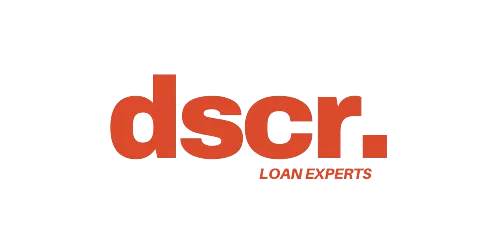
Mortgage Debt: How to Convert It Into Cash Strategically
Converting mortgage debt to cash, often referred to as "cashing out," involves leveraging the equity in your home to access funds for various financial needs. Whether you’re looking to finance home improvements, consolidate debt, or cover large expenses like college tuition, there are multiple options available, each with its own benefits and considerations.
Here’s a comprehensive guide on how to convert your mortgage debt to cash, with key insights into how mortgages, equity, and mortgage refinancing work.
What is a Mortgage and How Does it Work?
A mortgage loan is a loan from a mortgage lender that allows you to borrow money to purchase a home. In exchange, you agree to make regular payments, known as monthly mortgage payments, which typically include interest and principal.
The lender holds a lien on the property until the loan is paid in full. By understanding how mortgages work, you'll be better equipped to make decisions about refinancing or tapping into your home's equity.
Understanding Mortgage Debt and Home Equity
Mortgage debt refers to the amount of money you owe on your existing mortgage. It can be a significant portion of your overall debt, impacting your credit score and financial stability.
On the other hand, home equity is the difference between your home’s current appraised value or market value and the outstanding balance of your mortgage loan. To calculate your equity:
Home's Equity = Current Market Value - Outstanding Mortgage Balance
Understanding both your mortgage debt and home equity is crucial for managing your finances and making informed decisions about using your home as a financial resource.
How To Convert Your Mortgage Debt To Cash

1. Cash-Out Refinance
A cash-out refinance replaces your original mortgage with a new mortgage loan that has a higher loan amount than you currently owe. The difference between the new loan and your current mortgage balance is paid out to you as cash out proceeds.
How Does a Cash-Out Refinance Work?
Determine Equity: Calculate how much equity you have by subtracting your loan balance from your home’s current appraised value.
Apply for Refinance: Shop around for the best refinance rates or work with your current mortgage lender.
Underwriting and Approval: Lenders will assess your credit score, gross monthly income, and debt-to-income ratio to determine your eligibility.
Receive Cash: Once approved, the new mortgage pays off your previous mortgage, and the remaining funds are disbursed to you as cash out proceeds.
2. Home Equity Loan
A home equity loan is a lump sum loan you can borrow against your home's equity, often referred to as a second mortgage.
How It Works:
Calculate Home Equity: Determine how much equity you have in your home.
Loan Application: Apply with a lender offering home equity loans.
Approval Process: Lenders evaluate your credit score, property value, and debt-to-income ratio.
Receive Lump Sum: Upon approval, you’ll receive the loan amount as a lump sum.
3. Home Equity Line of Credit (HELOC)
A home equity line of credit (HELOC) is a revolving line of credit that allows you to borrow as needed, similar to a credit card, using your home’s equity as collateral.
How It Works:
Determine Equity: Calculate how much equity you have in your home.
Application Process: Apply for a HELOC with a lender.
Draw Period: During the draw period (typically 5–10 years), you can borrow funds as needed and only pay interest on the amount borrowed.
Repayment Period: After the draw period, you’ll repay the loan balance (principal and interest) over a set time, usually 10–20 years.
4. Reverse Mortgage
A reverse mortgage allows homeowners aged 62 or older to convert part of their home equity into cash. Unlike traditional loans, the mortgage loan doesn’t need to be repaid until the homeowner moves out, sells the house, or passes away.
How It Works:
Eligibility Check: Confirm you meet cash-out refinance requirements like age and equity.
Application: Apply with a lender specializing in reverse mortgages.
Loan Disbursement: Choose how to receive the funds—lump sum, monthly payments, or a line of credit.
Repayment: The loan proceeds are repaid when the home is sold or vacated.
Comparison of Methods to Convert Mortgage Debt to Cash

The bar chart above compares the four methods of converting mortgage debt to cash—Cash-Out Refinance, Home Equity Loan, HELOC, and Reverse Mortgage—based on their pros, cons, and risks, rated on a scale from 1 to 5.
Understanding Closing Costs and Refinance Requirements

Refinancing or borrowing against your home’s equity involves minimal closing costs, such as appraisal fees, title insurance, and origination fees. Some lenders allow you to roll these costs into the loan.
To qualify for a refinance or equity-based loan, you’ll typically need:
A higher credit score
Stable income and employment
A low credit utilization ratio
Adequate equity in your home
Summary
If a cash-out refinance isn’t the right fit, consider these alternatives:
Home Equity Loan: Best for fixed expenses like home improvements.
HELOC: Ideal for ongoing needs.
Reverse Mortgage: A solution for homeowners aged 62 or older to access home equity as cash, with no monthly mortgage payments required.
Rate-and-Term Refinance: Adjust your loan term or lower your interest rate without borrowing additional cash.
Conclusion
Converting your mortgage debt to cash can be a strategic way to access cash for various financial needs, including debt consolidation, college tuition, or home improvements. Whether through a cash-out refinance, home equity loan, HELOC, or reverse mortgage, each option has unique benefits and risks to consider.
Evaluate your personal finance goals, consult with a mortgage lender, and carefully weigh the pros and cons before making a decision. By understanding your options, you can effectively leverage your home’s equity while maintaining financial stability and meeting your goals.


